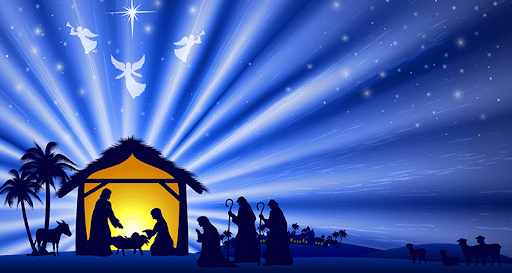“American” Christmas Traditions We Borrowed From Other Countries
9. 5. 2024
What will you learn in this article?
- ⭐ Leaving milk and cookies for Santa
- ⭐ Putting up and decorating Christmas trees
- ⭐ Christmas lights
- ⭐ Baking the Fruitcake
- ⭐ Christmas stockings
- ⭐ Christmas caroling
- ⭐ Kissing under the mistletoe during the holidays
- ⭐ Christmas crackers
- ⭐ The Advent calendar
- ⭐ Hanging a wreath on your front door
- ⭐ Baking Christmas cookies
- ⭐ Christmas markets
- ⭐ Ugly Christmas sweaters
- ⭐ Candy canes
- ⭐ Poinsettias
- ⭐ Seeing The Nutcracker
- ⭐ Christmas pickles
- ⭐ Having fish for dinner on Christmas Eve
- ⭐ Sending Christmas cards
- ⭐ Baking the Gingerbread houses
Christmas is a time of many traditions that families across the United States celebrate.
These customs range from setting out milk and cookies for Santa to hanging stockings above the fireplace. Despite some of these traditions appearing to be quintessentially American, their origins are pretty diverse.
Some have roots in Druid fertility practices, while others come from Roman rituals. In this article, we explore the origins of popular Christmas traditions from around the world.
Leaving milk and cookies for Santa
Legend has it that the Norse god Odin owned an eight-legged horse named Sleipnir. Children would leave treats for the horse, hoping that Odin would favor them with gifts in return. This tradition became popular in America during the Great Depression. Parents used it to teach children the value of gratitude, encouraging them to appreciate anything they might receive on Christmas.
Putting up and decorating Christmas trees
While the use of trees in holiday celebrations is believed to have originated from pagan practices, recognizable versions of the Christmas tree can be traced back to Germany as early as the 16th century. However, the modern Christmas tree gained popularity in the UK during the 1840s when Prince Albert, originally from Germany, displayed the first British Christmas tree at Windsor Castle. Today, you can find a Christmas tree farm in any of the 50 states, and these businesses are responsible for taking 25-30 million trees to the market each season.
Try new and interesting Christmas recipe that is rooted in Czech cuisine – Christmas carp recipe.
Christmas lights
It is believed that Edward Hibberd Johnson, a colleague of Thomas Edison, invented Christmas lights connected on strands.
However, the tradition of illuminating Christmas trees originated in Germany as early as the 17th century.
The Library of Congress confirms this. Back then, celebrants used to attach candles to their trees and lit them up. However, these lights were less safe than our current LED ones.
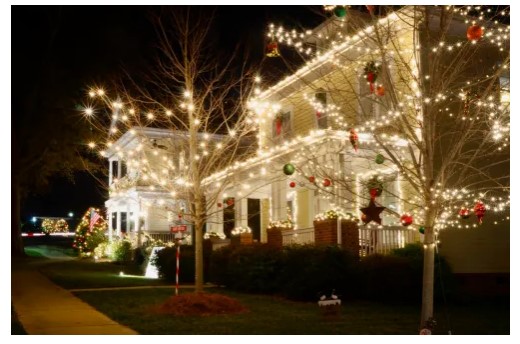
Baking the Fruitcake
Fruitcake has a long history that dates back to the Middle Ages. This sweet and dense treat gained popularity in multiple European nations during the same time period due to the imports of dried fruit to Western Europe from Asia.
European immigrants brought the tradition of fruitcake to the United States, and you can still see some of its European variations, such as German stollen and Italian panforte, in stores around the holidays today.
Christmas stockings
The legend behind Christmas stockings goes back to the time of Saint Nicholas during the 3rd and 4th centuries in present-day Turkey.
It is said that Saint Nicholas learned about a poor widower and his three daughters in dire need of help. Moved by their plight, he decided to lend a hand.
One night, he sneaked into their house and saw the girls’ stockings drying by the fire. He filled them with gold coins and left without making a sound, hoping to bring some joy into their lives.
You can choose healthy nuts, for example, from the batch of those you used to bake walnut Christmas cookies.
Christmas caroling
The specific time when the first songs about Jesus’ birth were written is unknown, but we do know that caroling as we know it today originated in 13th-century Britain.
Back then, instead of singing, Anglo-Saxons would go from door to door, wishing their neighbors good health.
According to Andy Thomas, author of the 2019 book, the greeting they used was “waes hael” in Anglo-Saxon.
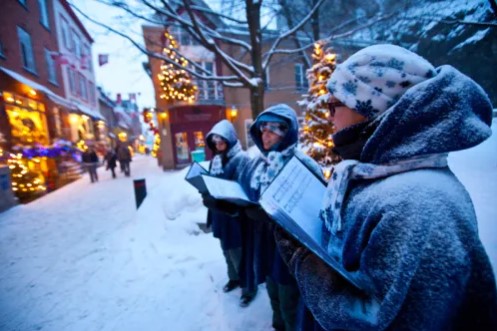
Kissing under the mistletoe during the holidays
Have you ever been kissed under a sprig of mistletoe during the holiday season? You might be surprised to learn that Druids are responsible for this tradition.
According to Ronald Hutton, the author of the book “Blood and Mistletoe: The History of the Druids in Britain” in 2009, mistletoe was believed to have fertility-restoring properties for barren animals.
This might be why the parasitic plant is associated with love and romance today.
Christmas crackers
Tom Smith, a British candy maker, invented the modern-day Christmas cracker in 1847 while trying to come up with new packaging for his holiday sweets.
His creativity and willingness to think outside the box led to a beloved holiday tradition that is still celebrated today.
So, the next time you put on a paper crown from a Christmas cracker, remember the inspiring story of Tom Smith and how a simple idea can bring joy to so many people.
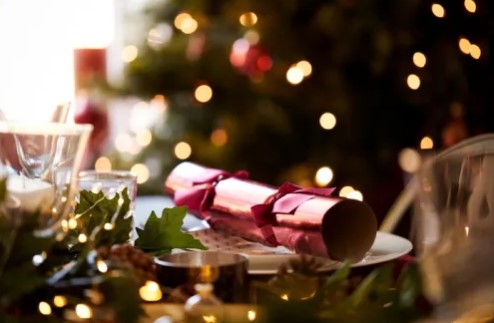
The Advent calendar
According to the German Christmas Museum, the first known mention of a modern Advent calendar can be traced back to an 1851 children’s book.
However, it was Gerhard Lang who is credited with creating the first commercially available version of the Advent calendar in his native Germany in 1908.
Lang’s version was complete with doors and treats, and it quickly became popular among children and adults alike.
Hanging a wreath on your front door
During the Christmas season, it’s common to see wreaths adorning doors. However, did you know this tradition can be traced back to the Romans?
According to a 1988 article in The New York Times, the Romans would often give their loved ones branches to celebrate the new year.
These branches would eventually be fashioned into the wreaths we recognize today.

Christmas decorations in the apartment can be beautiful, and luxurious, and yet it does not have to cost a lot! Get inspired by our article on How to make affordable Christmas decorations!
Baking Christmas cookies
The concept of Christmas cookies has its roots in Europe and is much older than people usually think.
According to the book “Entertaining from Ancient Rome to the Super Bowl: An Encyclopedia,” gingerbread cookies and houses became popular around the same time.
Initially, gingerbread cookies were used more as decorations for Christmas trees than as treats.
Christmas markets
If you enjoy visiting Christmas markets during the holiday season, you are carrying on a centuries-old German tradition.
Although similar markets were likely present throughout the Holy Roman Empire, the first modern Christmas market is said to be Dresden’s Striezelmarkt, which was founded in 1434.
Ugly Christmas sweaters
The trend of wearing garish holiday-themed sweaters somewhat ironically has become a global phenomenon.
It all started in Vancouver, Canada, and soon became popular in the U.S. as well, spreading joy and cheer through themed work days, retailers who specialize in making loud holiday apparel, and even ugly sweater fun runs.
It’s amazing to see how a simple idea can bring so much happiness and unite people across countries and cultures.
Similar articles
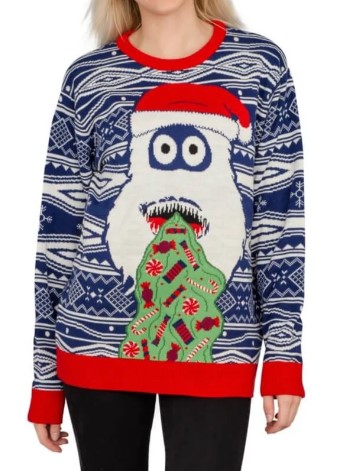
Do you want to buy a live tree, but don’t know which one to choose? Get inspired by our guide to choosing a living Christmas tree.
Candy canes
Candy canes are a beloved Christmas treat that can be used for decoration, baking, or snacking. According to Carly Schildhaus of the National Confectioners Association, candy canes were potentially invented in 1670.
The choirmaster at the Cologne Cathedral in Germany is said to have distributed sugar sticks to his young singers during the Living Creche ceremony to keep them quiet.
To commemorate the occasion, he bent the candies into the shape of shepherds’ crooks, giving them their distinctive shape.
Are you looking for activities to make spending time with your family or friends more pleasant? Get inspired by our Christmas quizzes for young and old!
Poinsettias
The vibrant red flowers of poinsettias can be seen in many homes, businesses, and churches throughout the U.S. during the holiday season.
However, these plants were not well-known in America until botanist and the first ambassador to Mexico, Joel Roberts Poinsett, brought them back to his home country in 1828, hence the name.
One interesting story associated with the flower tells of a poor Mexican girl who couldn’t afford a proper gift to bring to church for the baby Jesus. So she offered some weeds with a pure heart, and they magically transformed into beautiful poinsettias.
This tale proves that it’s the thought that counts.
Mexican Christmas holidays combine old Indian customs and Christian traditions uniquely. Let’s discover together how Christmas is celebrated in Mexico.
Seeing The Nutcracker
During the Christmas season, many of us enjoy watching holiday movies.
However, watching a live performance of The Nutcracker can make this tradition even more special.
The Nutcracker originated in Russia and was scored by Pyotr Ilyich Tchaikovsky. It was first choreographed by Marius Petipa and premiered on Christmas Eve in 1892.
The ballet was not performed outside of Russia until 1934 and did not make its way to the United States until 1944.
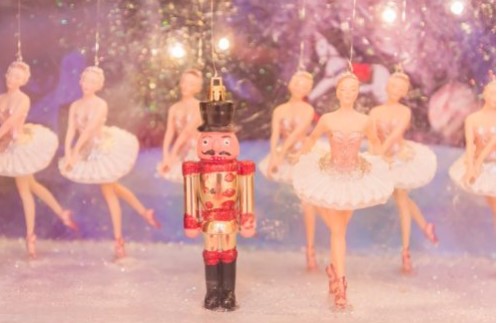
Spending Christmas with the Germans: Which rituals are important and why potato salad is part of a traditional celebration?
Christmas pickles
The Christmas pickle tradition is a fun and unique custom that involves hanging an ornament shaped like a pickle on the Christmas tree.
The ornament is usually green and should be hung last among all the other decorations. On Christmas morning, the first child to find the pickle ornament hidden among the pine needles and other shiny objects in the tree will be the first to open their presents.
There are various stories about the origins of this tradition.
Some people believe it started in Germany during the 16th century, where the pickle was considered a symbol of good luck and prosperity. Others think it was brought to America by German immigrants in the 19th century.
One popular story is that a Civil War soldier who was imprisoned and starving on Christmas Eve begged a guard for a pickle, which he ate and credited with saving his life.
Another version of the story involves a Bavarian family who hid a pickle ornament in their Christmas tree, with the first child to find it receiving an extra gift.
However, research suggests that the real story behind the Christmas pickle tradition is not so romantic. In fact, it was likely invented by salesmen in the late 1800s to boost sales of German glass ornaments in the United States. They created the story that the pickle was a cherished symbol of good luck and hid it in Christmas trees to entice customers to buy more ornaments.
Regardless of its origins, the Christmas pickle tradition has become a beloved holiday custom in many households around the world. It adds an element of excitement and surprise to the holiday season, and it’s a great way to create lasting memories with family and friends.
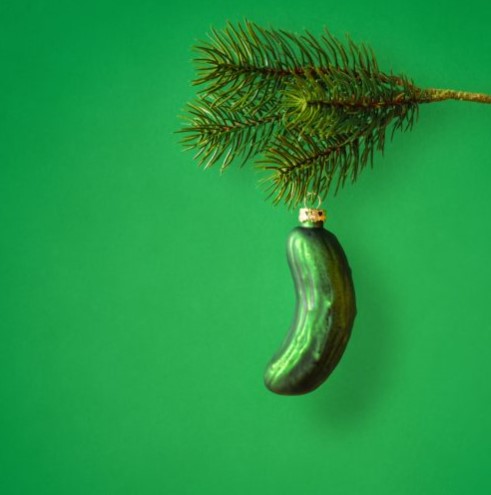
Having fish for dinner on Christmas Eve
In the United States, “The Feast of the Seven Fishes” is a popular Christmas Eve tradition observed by many families.
This feast has its origins in Southern Italy, where it is known as La Vigilia. The tradition involves a grand meal consisting of seven different seafood dishes, such as fried calamari, shrimp scampi, clams casino, and linguine with clam sauce, to name a few.
The origin of this tradition is said to stem from the Roman Catholic custom of avoiding meat on the day before a holiday, which was followed by people in Italy.
The seafood-heavy diet of the Southern Italian region also contributed to the tradition. Many Italian immigrants brought this tradition to the United States, where it has been embraced by people of various backgrounds.
Over time, the feast has evolved to include more than seven dishes, and the types of seafood may vary depending on the region or personal preference.
However, the spirit of the tradition remains the same – a celebration of family, togetherness, and the joy of Christmas Eve.
Recipes that will put a smile on your face this Christmas – Starring Biscoff Cookies Balls!
Sending Christmas cards
Even in the age of social media and texting, when it’s easy to connect with others instantly, it’s heartwarming to receive a Christmas greeting in the mail or email.
In today’s modern age, sending a Christmas card is the closest you can get to showing that you really care.
Although Christmas cards have been a popular way of spreading holiday cheer for many years, the origin of the first holiday greeting card can be traced back to Britain.
In 1843, Henry Cole, who was the founding director of the Victoria and Albert Museum, created the first known Christmas card. The card featured a beautiful drawing of a family gathering around a table, enjoying the holiday season together. The message on the card read “a merry Christmas and a happy New Year to you”.
Cole’s card was not only the first holiday greeting card ever made, but it also helped to popularize the tradition of sending Christmas cards. At the time, Christmas cards were a luxury item that only the wealthy could afford, as they were often handcrafted and personalized.
However, Cole’s card was mass-produced and sold for a shilling each, making it more affordable for the average person. By the end of the 19th century, Christmas cards had become a popular tradition all over the world, and they remain a beloved part of the holiday season to this day.
Don’t you like modern technology? So make a paper Christmas card and delight your loved ones with it.
Baking the Gingerbread houses
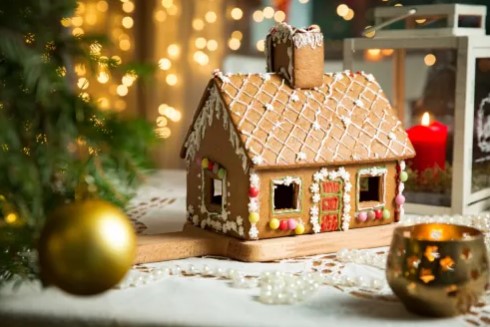
Gingerbread houses have been a part of German Christmas traditions for centuries.
According to historical accounts, gingerbread was already a popular treat in Germany during the Middle Ages. It was commonly served during festive occasions and was especially popular during the Christmas season.
The city of Nuremberg, located in the northern part of Bavaria, became particularly famous for its gingerbread houses, which were constructed of the delicious treat. Nuremberg’s gingerbread houses were not just any ordinary confectionery.
They were often decorated elaborately with frosting, candies, and other edible ornaments. They were so popular that they became the centerpiece of many Christmas markets throughout Germany and other parts of Europe.
Today, gingerbread houses are enjoyed in many parts of the world, with various styles and decorations that reflect the culture and traditions of each region.
Christmas customs and traditions can vary from region to region or culture to culture.
However, the most important aspect of the holiday season should be spending quality time with your loved ones.
It’s a great opportunity to spread joy, love, and well-being to those around you and in turn, these positive vibes will come back to you.
So, let’s cherish our time with family and friends and make this holiday season a memorable one.
Merry Christmas!
Customs and traditions are of great importance on Christmas Day. Learn about Christmas customs, traditions, and superstitions in Europe, particularly the Czech Republic.



